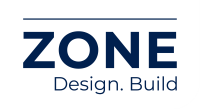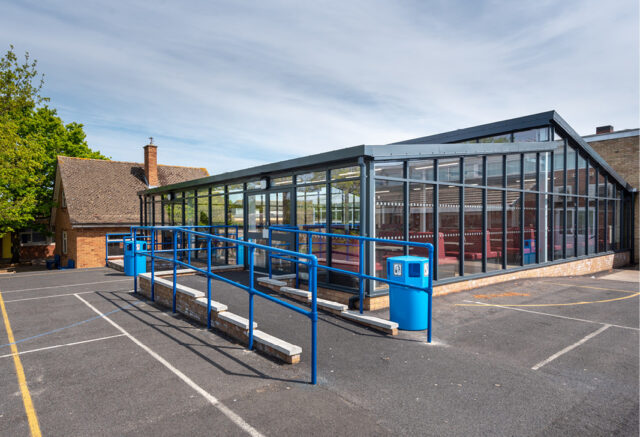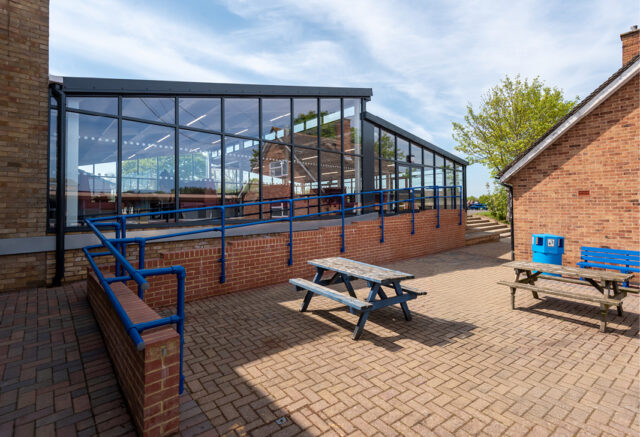A question of quality
School buildings are expected to last for decades, support the wellbeing and achievement of pupils and meet the complex requirements of modern education. However, quality in delivery is frequently compromised by timeline issues, fragmented processes and cost pressures that are typically associated with traditional construction models.
A recent report by the Department for Education, lists building safety as one of the key risks facing the sector. Of particular concern are post-war buildings using materials or designs now well beyond their intended lifespan.
According to the National Audit Office, around 700,000 pupils are currently being taught in buildings that require urgent attention. The scale of the challenge highlights the need for construction delivery that prioritises quality, reduces risk and protects long-term value.
Common risks in school construction
Typical risks in education construction projects include:
- Safety – Live school environments demand rigorous site management. Where construction overlaps with term time, safeguarding and staff-pupil safety must be tightly controlled.
- Delays – Projects are often tied to fixed delivery windows, such as summer holidays. Delays due to planning, procurement or site conditions can result in teaching disruption and additional costs.
- Budget Overruns – Unexpected changes in scope or inaccurate early-stage planning can place significant strain on already limited capital allocations.
- Compliance Failures – School buildings must meet stringent planning and design requirements. Where compliance is not properly managed, the result can be costly rework, delays, or missed handover dates.
A major contributing factor across all these areas is the quality of feasibility work. According to the RIBA ‘Better Spaces for Learning’ report, compressed early-stage timelines and incomplete site information are a recurring cause of poor-quality outcomes.
While initial feasibility studies may be carried out to a high standard, they often fail to assess construction phasing or the practical impact on day-to-day school operations. As a result, planning permission may be granted for schemes that later prove unfeasible due to overlooked site constraints, such as the need for temporary accommodation. In some cases, essential elements of the original brief are dropped to control cost, undermining the educational purpose of the project.
Where design-build delivers greater control
The design-build model brings all elements of project delivery under one team, from feasibility and design through to completion. This single-point accountability improves quality and reduces many of the risks listed above.
This is where the design-build model presents a significant advantage. The same team is responsible for both planning and delivery with design-build, meaning that buildability, phasing and cost implications are addressed from the outset. Risks are identified early and feasibility work is informed by those who will deliver the project. This leads to more robust programmes, fewer compromises later in the process and outcomes that reflect the original intent.
Supporting educational outcomes
Quality in school construction is not just about safety and compliance; building design also affects learning and pupil outcomes. Research shows that improved natural daylight in classrooms correlated with a 20 percent increase in maths performance and a 26 percent increase in reading literacy. Good design supports student wellbeing and attainment.
Design-build teams are well placed to incorporate features that enhance educational performance without compromising deliverability. These may include better glazing, improved ventilation, acoustic controls and future-proofed layouts.
Towards a higher standard of delivery
The UK government recognises that quality must be addressed at system level. Guidance published by the Cabinet Office on Modern Methods of Construction (MMC) highlights the potential of integrated approaches to improve productivity, efficiency and quality across public sector building programmes.
A design-build approach aligned with MMC principles offers education providers greater control over specification, more predictable delivery and outcomes that reflect the long-term needs of schools and communities.
At ZONE Design. Build, this integrated model is already in practice. With a dedicated focus on the education sector, ZONE delivers permanent, high-quality school buildings through a fully managed design-build process. From initial feasibility to final handover, the team works in close collaboration with school leaders to ensure that buildability, programme constraints and long-term educational outcomes are fully understood from the outset. This approach reduces risk, enhances quality and provides the confidence schools need to invest in their estate with certainty.



